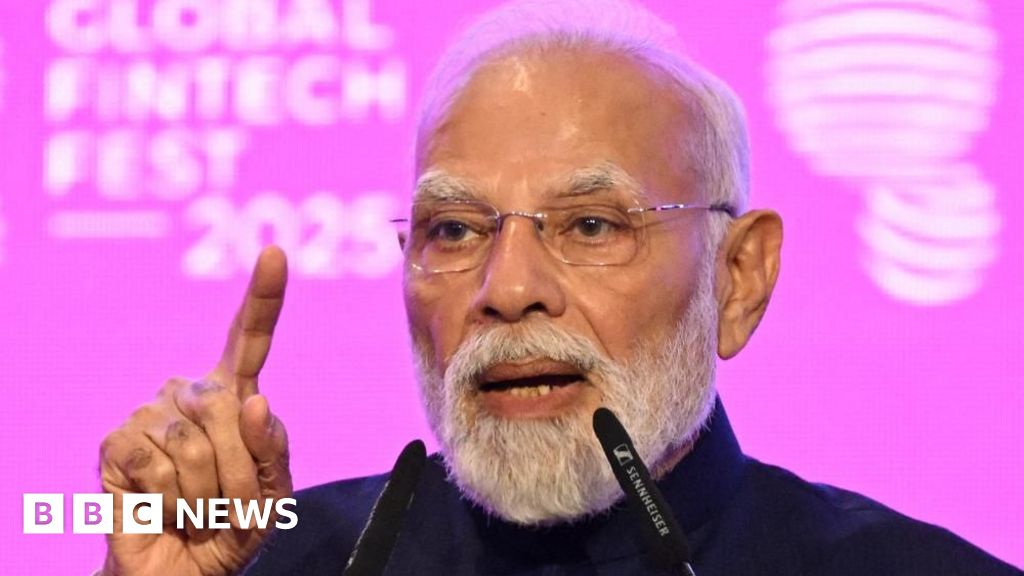The “12 Day War” between Israel and Iran is the peak of a five-decade long conflict between a military-centric hierarchy of the Israeli state and the dispersed mosaic defence infrastructure of the Islamic Republic as a network state. Israel has been scoring several pyrrhic military wins against Iran’s network of networks in the region over the last year. Yet, while Israel’s degradation strategy bought the Jewish state breathing space, Iran’s network both within and across the region remains intact. Iran is not a state in the traditional sense, vulnerable to top-down regime change or decapitation. It is a mosaic network state – an adaptive, self-organizing, and ideologically resilient structure that has proven to be able to absorb external shocks without collapsing. Israel’s campaign, its most direct and expansive confrontation with Iran to date, demonstrated the limits of conventional state-on-state warfare against a network state. Degrading the Islamic Republic’s broader regional network, consisting itself of networked non-state actors, will not lead to swift victories but is a long-drawn process of degradation that would require the mobilization of a counter-network.
Iran has long moved beyond the rigid structures of bureaucratic hierarchy. Its governance and regional influence operate through what network theorists call an “all-channel heterarchy”—a decentralized but interconnected system of nodes. Domestically this network revolves around the Supreme Leader who embodies the ideological and institutional anchor of a decentralized network of different parallel institutions of governance and statecraft. The Islamic Republic can therefore be defined as a network state Iran because it generates power not solely through traditional military or bureaucratic hierarchies, but through a dispersed web of surrogate forces, competing authority centres, networks of companies and financial flows that operate across the boundaries of traditional state sovereignty and territoriality.
A key branch of that network state are the Islamic Revolutionary Guard Corps (IRGC) a networked, parallel security apparatus directing offensive surrogate networks within the so-called ‘Axis of Resistance’ from Lebanon, over Syria and Iraq to Yemen; but also comprising a bottom-up network of socio-cultural militias and activists – the Basij – trying to tie average Iranians into the system of the Islamic Republic. More than that, the IRGC commands a global empire of financial and business networks, which functions as the value-chain that financially and materially underwrites the ‘Axis of Resistance’.
Another branch of that network is the clerical establishment that sustains the theocratic legitimacy of the regime. It functions as the ideological engine of the Islamic Republic weaving the ideational thread through regional Shia networks in an attempt to connect them to the overall narrative of the Islamic Revolution. Then there are the bonyads – multi-billion-dollar charitable trusts that have developed into rent-seeking patrimonial networks only accountable to the Supreme Leader.
All of these networks exist in parallel to the formal bureaucratic institutions of the state, such as the government, the various ministries and the formal security sector. The regime’s networks – wary of the threat of a secular security sector with a monopoly over violence – have long built its strategic defence around religio-militant surrogate networks in the region: the ‘Axis of Resistance’. The notion of mosaic defence suggests that a decentralized network of militants spanning the entire region cannot be easily defeated by enemies with superior firepower such as the United States or Israel. Each surrogate acts semi-autonomously, but remains connected by shared ideology, narrative coherence, and a strategic vision still dominated by Tehran.
These networks have evolved from traditional patron-client dynamics to strategic partnerships. They offer local governance, military force, and ideological influence. The IRGC, functioning as a central hub, connects with each node through a web of ideological, logistical, and financial ties. However, these links are not unidirectional. The network within and the network without are designed for resilience: if one hub or node is degraded, others can compensate.
At the heart of this heterarchy is a compelling narrative: Islamic resistance against foreign domination and oppression. It is this consensual, ideological glue – not strict command-and-control – that sustains the network both within and without. This narrative initially resonated well within the dissident camps that triggered the resistance against the Shah in the 1970s. The revolution of 1979 was widely borne by popular support, which was sustained through the traumatic Iraq-Iran War in the 1980s where a weak post-revolutionary regime needed to rally Iranians around the flag. Yet, decades of coup proofing, repression, corruption and ideological reactionism have gradually undermined the mobilization power of the regime.
Less so at the regional level. Here – also driven by Israel’s disruption of its supply chains – the ‘Axis of Resistance’ has developed into an ever looser network that is not just sustained by material, financial and military support from Iran but by the narrative of resistance – mostly directed against Israel and US foreign and security policy. The narrative sets the agenda, vision and purpose of an increasingly horizontal network that ever less requires Iran as the central hub to function. From the beginning Hezbollah, Iraqi militias and the Houthis have been able to rely on a strategic form of decentralized mission command. They have retained autonomy and agency to plan and execute activities as they see fit. Like strategic swarms, nodes act independently but in alignment. Instead of concentrating effort, the ‘Axis’ disperses activities across a multitude of domains, involving a range of different actors, who execute activities seemingly coherently with large degrees of autonomy, which taken together morphs into one – just like a swarm of birds.
Israel meanwhile has learned lessons of how to engage the network when it struck Hezbollah in 2024. Emerging from the de-centralized ‘pager attack’ against Hezbollah operatives, is a doctrine of degradation through deep intelligence penetration and simultaneous kinetic strikes. The goal was to map the Iranian network, identify interdependent vulnerabilities, and strike multiple nodes at once. This was not a decapitation strike – it was an attempt to paralyze the network through systemic shock.
Initially, the results were striking. Key strategic and operational Hezbollah commanders were killed. Supply chain hubs were destroyed and lines of communication disrupted. The strategic assassination of its charismatic leader Hassan Nasrallah dealt the final blow that would lead to strategic paralysis. It was enough to redraw the boundaries of deterrence. Nonetheless, Hezbollah remains intact as a network and a potent fighting force.
Israel tried the same against Iran. A network of intelligence operatives had setup an intricately orchestrated and decentralized operation against key IRGC commanders and lines of communication. Together with massive air strikes, Israel was initially able to deliver strategic shock to the network system. But within days, the system began to bounce back. Leadership reconstituted from second-tier commanders. Communications although disrupted did not undermine the de-centralized mosaic defence network. The various nodes acted upon initiative. Air defences although hopelessly overwhelmed by the technologically superior enemy were able to mobilize. Ballistic missiles were launched successfully causing havoc in Israeli cities.
What remained largely invisible during the 12-day war, however, was the ‘Axis of Resistance’. The various surrogates showed that Israel’s degradation since 2023 transformed the network into a looser, horizontal axis primarily serving local interests rather sacrificing themselves for Iran’s survival. Crucially for Israel, at least for the moment Hezbollah does not assist the Islamic Republic by re-opening the Lebanese front.
Even resilient networks can fracture from within. The greatest threat to Iran’s networked system lies in a breakdown between its own nodes—particularly between the IRGC and the clerical establishment. As the IRGC’s economic and political influence has grown, so has its autonomy. If the ideological alignment between the Guards and the clerical elite erodes, the network may begin to splinter. The same is true at the societal level. The system is less and less resilient to absorb growing numbers of disenfranchised and alienated Iranians. The resistance narrative no longer resonates across Iran, eroding the foundations of the network state that has been deeply embedded into the popular fabric of Iran in 1979. If local nodes begin questioning the central narrative, they may seek greater autonomy or even defect from the system.
In network theory, when the ideological or strategic glue binding nodes decays, the system becomes vulnerable to fission – even without external pressure. As the network consists of dispersed actors and decentralized activities only a grand strategic narrative provides the purpose on the meta level that creates the symbiotic effect that is larger than the sum of its parts. Israel’s military approach – based on sequential system degradation– is strategically mismatched to Iran’s mosaic network. A networked adversary cannot be defeated by linear methods. It can only be challenged by a rival network: one that offers a compelling counternarrative, is able to mobilize, and mirrors the adaptive, distributed structure of its opponent. No such rival network currently exists.
Since 2009 the simmering revolution has triggered organic mobilization against the regime. But without a systemic organization, a clear narrative and an inclusively appealing, charismatic leadership, the highly divided protest movement fails to compete with a well-organized network of repression the regime has built. Until a counter-network emerges that is ideologically credible, locally embedded, and strategically coordinated, the Islamic Republic’s network will endure – even if under a changing grand-strategic outlook. Iran has built a system designed not to win quickly, but to survive indefinitely. It is not a command-and-control state but a strategic web – hard to map, harder to break. The June 2025 war demonstrated that while Israel can strike hard and deep, it cannot yet dislocate the system. Iran’s resilience is not accidental. It is by design. And in a region increasingly shaped by networks, not states, the Islamic Republic can likely only be transformed from within the network itself.

 Movie
Movie 3 months ago
145
3 months ago
145 





![Presidents Day Weekend Car Sales [2021 Edition] Presidents Day Weekend Car Sales [2021 Edition]](https://www.findthebestcarprice.com/wp-content/uploads/Presidents-Day-Weekend-car-sales.jpg)



 English (United States)
English (United States)